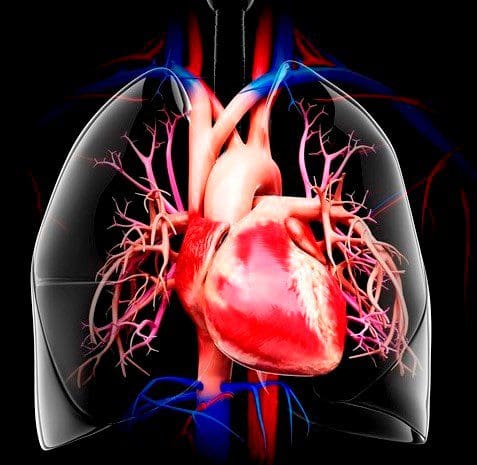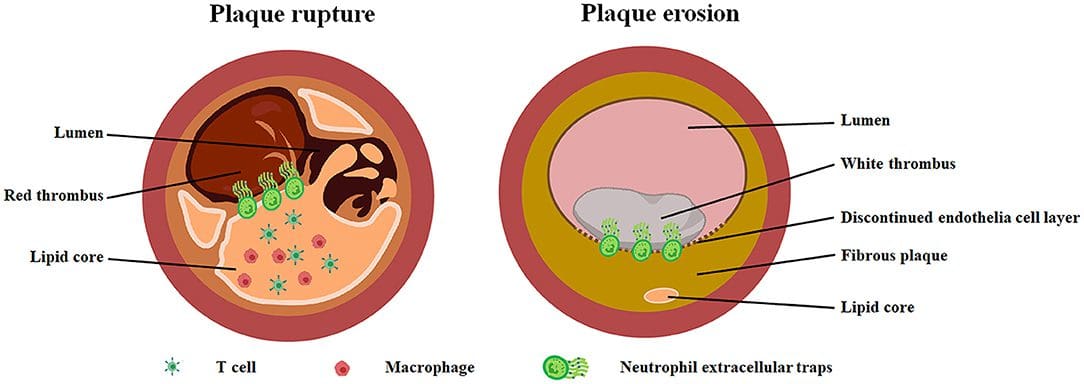Table of Contents
Introduction
In the cardiovascular system, the heart’s primary role in the body is to pump blood into the arteries, veins, and blood vessels to be transported throughout the entire body, giving oxygen-riched blood and nutrients to each muscle tissue and organ system so that they are doing their job. These blood cells are making sure that the body is functional. When there are disruptors that can cause the body to develop chronic illnesses, it can disrupt the cardiovascular system with chronic illnesses if it is not treated right away. In this 2 part series, we will continue the discussion of diagnosis concepts for cardiovascular disease and take a look at risk factors that causes cardiovascular disease in the body. Part 1 took a look at the diagnosis concepts for cardiovascular disease. By referring patients to qualified and skilled providers who specialized in cardiovascular services. To that end, and when appropriate, we advise our patients to refer to our associated medical providers based on their examination. We find that education is the key to asking valuable questions to our providers. Dr. Alex Jimenez DC provides this information as an educational service only. Disclaimer
Can my insurance cover it? Yes, in case you are uncertain here is the link to all the insurance providers we cover. If you have any questions, please call Dr. Jimenez at 915-850-0900.
What Is Cardiovascular Disease?

In the cardiovascular system, the heart makes sure that the blood is pumping and traveling all throughout the body. When there are unwanted pathogens that enter the body, it can cause an array of problems. Studies have shown that cardiovascular disease is a cluster of diseases that can affect the heart. Some of the risk factors can even help the development of atherosclerosis and this can be numerous factors which include:
- Sedentary lifestyle
- A poor diet
- Oxidative stress
- Physical inactivity
CVD & Chest Pain Evaluation
As a number one cause of death in the US, one of the symptoms that cardiovascular disease is chest pains. Since there are 60,000 miles of arteries in the human body, studies have found that chest pains and shortness of breath are common in cardiovascular diseases and that they can become a risk factor for future cardiovascular morbidity and mortality rate in the body. Exertional precordial or substernal chest pressure, tightness, or chest pain with or without radiation to arms, neck, and shoulders or back and associated with:
- Dyspnea
- Diaphoresis
- Nausea
- Dizziness
- Sweating and pallor
- Weakness and fatigue
- Stomach and abdominal pain
HCTP Therapy
As a form of regenerative medicine, HCTP (human cellular tissue products) or stem cells* are used to help boost the body’s natural healing process. In the U.S., nationally affiliated clinics and distribution organizations use HCTP therapy for bone marrow transplants, while international affiliated clinics and distribution organizations use HCTP therapy for chronic illnesses to help repair damaged cells, tissues, and organs back to their original state in the body.
Risk Factors From CVD
There are many risk factors that correlate with cardiovascular disease as it still remains the second leading cause of death. Some of the risk factors that cardiovascular disease can cause the body to be dysfunctional due to age, weight, gender, or family history. Other risk factors include:
- Coronary Artery Plaque Erosion
- Coronary Heart Disease
- Microalbuminuria
- Plasma Viscosity
Coronary Artery Plaque Erosion
Studies have found that coronary artery plaque erosion can cause eroded lesions that have a few inflammatory cells that can cause damage to the artery veins. Not only that if it is not treated can cause morbidity, mortality, and loss of quality of life in the body. Other studies also found that plaque erosion is the primary cause of coronary thrombus in premenopausal women that can actually raise cholesterol.
About one-third of NSTEMI due to plaque erosion and this is a “white thrombus” due to superficial intimal erosion. When there is endothelial cell death and desquamation uncover the basement membrane collagen (hyaluronic acid and glycosaminoglycans) which lead to TLR 2 expression PMNs produce NETS (Netosis)(Necoptosis) which forms the scaffold for thrombus formation. NETS contain pathogens, proteases, histones, chromatin, proteins, and ROS. These superficial erosions are different from other plaque that contain more VSMC, ECM, and NETS but fewer lipids, macrophages, foam cells, and inflammatory cells, thus the activation of superficial erosions by NADPH oxidase, high fat diet, cholesterol crystals, and MPO.
Coronary Heart Disease
There exist over 400 coronary heart disease risk factors and mediators beyond the top 5 of hypertension, dyslipidemia, diabetes, smoking, and obesity. Studies have shown that coronary heart disease is a common heart condition that involves atherosclerotic plaque formation in the vessel lumen causing impairment to blood flow. With the infinite insults and coronary heart disease risk factors and mediators inducing only three finite responses of inflammation, oxidative stress, and vascular immune dysfunction, there are over 100 more genetic variants that can increase coronary heart disease including:
- Genomics, SNP’s and epigenetics
- Gender and age
- Inflammation
- Oxidative stress
- Vascular immune dysfunction
- Infections
- Metabolic and nutritional
- Toxins
- Psychological and neurological
- Sleep disturbances
- Lack of exercise
- Structural and hemodynamic
- Hormonal
Microalbuminuria
Microalbuminuria is one of the earliest abnormalities in the vascular system and kidney that reflects endothelial dysfunction and increased vascular permeability. With a high correlation with progression to proteinuria, renal disease, LVH, and future CVD, CHD, MI, CHF, and CVA, studies have shown that microalbuminuria is a powerful predictor of cardiovascular disease and it is likely to develop into atherosclerotic vascular disease and renal impairment if it is not treated right away. Microalbuminuria can also trigger tubular RAAS activation via megalin/cubilin receptors and inflammatory/oxidative stress reaction with NFkB/AP-1.
Plasma Viscosity
When there is resistance to blood flow in a blood vessel and the blood viscosity decreases as shear rate increases ( non-Newtonian fluid due to RBC deformability and deaggregation), this is known as plasma viscosity. Studies have shown that when there is an increase in blood viscosity, it can cause acute infections with myocardial infarction and can decrease tissue perfusion, and initiate systemic vascular resistance response. Plaque viscosity can also worsen the outer wall of vascular branches and the inner wall of curves causing fibrinogen to bind RBC and induce aggregation. It is seen in atherosclerosis, hypertension, dyslipidemia, DM, metabolic syndrome, tobacco use, obesity, aging, hyperfibrinogenemia, polycythemia, thrombocytosis, elevated globulins, cryoglobulinemia, and male gender, causing LDL to be large enough to bind RBC while the HDL is smaller and cannot.
Conclusion
All in all, the cardiovascular system makes sure that the heart is pumping blood into the body and circulating throughout the entire system. When disruptors like cardiovascular disease start to cause problems to the body, it can lead to many heart-related diseases over time if it is not treated right away. By incorporating heart-healthy foods, exercising regularly, and changing lifestyle habits, the body can begin to feel better and function properly without any problems that can cause it to be dysfunctional.
References
Barnett, Lauren A, et al. “Chest Pain and Shortness of Breath in Cardiovascular Disease: A Prospective Cohort Study in UK Primary Care.” BMJ Open, BMJ Publishing Group, 25 May 2017, www.ncbi.nlm.nih.gov/pmc/articles/PMC5726088/.
Lopez, Edgardo Olvera, et al. “Cardiovascular Disease.” StatPearls [Internet]., U.S. National Library of Medicine, 11 Aug. 2021, www.ncbi.nlm.nih.gov/books/NBK535419/.
Quillard, Thibaut, et al. “Mechanisms of Erosion of Atherosclerotic Plaques.” Current Opinion in Lipidology, U.S. National Library of Medicine, Oct. 2017, www.ncbi.nlm.nih.gov/pmc/articles/PMC5676466/.
Shahjehan, Rai Dilawar, and Beenish S Bhutta. “Coronary Artery Disease.” StatPearls [Internet]., U.S. National Library of Medicine, 14 Nov. 2021, www.ncbi.nlm.nih.gov/books/NBK564304/.
Singh, Anurag, and Simon C Satchell. “Microalbuminuria: Causes and Implications.” Pediatric Nephrology (Berlin, Germany), Springer-Verlag, Nov. 2011, www.ncbi.nlm.nih.gov/pmc/articles/PMC3178015/.
Sloop, Gregory D, et al. “The Role of Blood Viscosity in Infectious Diseases.” Cureus, Cureus, 24 Feb. 2020, www.ncbi.nlm.nih.gov/pmc/articles/PMC7096068/.
Virmani, R, et al. “Plaque Rupture and Plaque Erosion.” Thrombosis and Haemostasis, U.S. National Library of Medicine, Sept. 1999, pubmed.ncbi.nlm.nih.gov/10695476/.
Disclaimer
General Disclaimer
Professional Scope of Practice *
The information herein on "Revolutionary Diagnosis Concepts For Cardiovascular Disease | Part 2" is not intended to replace a one-on-one relationship with a qualified health care professional or licensed physician and is not medical advice. We encourage you to make healthcare decisions based on your research and partnership with a qualified healthcare professional.
Blog Information & Scope Discussions
Welcome to El Paso's Premier Wellness and Injury Care Clinic wellness blog, where Dr. Alex Jimenez, DC, FNP-C, a board-certified Family Practice Nurse Practitioner (FNP-C) and Chiropractor (DC), presents insights on how our team is dedicated to holistic healing and personalized care. Our practice aligns with evidence-based treatment protocols inspired by integrative medicine principles, similar to those found on dralexjimenez.com, focusing on restoring health naturally for patients of all ages.
Welcome to El Paso's Premier Wellness and Injury Care Clinic & wellness blog, where Dr. Alex Jimenez, DC, FNP-C, a board-certified Family Practice Nurse Practitioner (FNP-C) and Chiropractor (DC), presents insights on how our team is dedicated to holistic healing and personalized care. Our practice aligns with evidence-based treatment protocols inspired by integrative medicine principles, similar to those found on dralexjimenez.com, focusing on restoring health naturally for patients of all ages.
Our areas of chiropractic practice include Wellness & Nutrition, Chronic Pain, Personal Injury, Auto Accident Care, Work Injuries, Back Injury, Low Back Pain, Neck Pain, Migraine Headaches, Sports Injuries, Severe Sciatica, Scoliosis, Complex Herniated Discs, Fibromyalgia, Chronic Pain, Complex Injuries, Stress Management, Functional Medicine Treatments, and in-scope care protocols.
Our information scope is limited to chiropractic, musculoskeletal, physical medicine, wellness, contributing etiological viscerosomatic disturbances within clinical presentations, associated somato-visceral reflex clinical dynamics, subluxation complexes, sensitive health issues, and functional medicine articles, topics, and discussions.
We provide and present clinical collaboration with specialists from various disciplines. Each specialist is governed by their professional scope of practice and their jurisdiction of licensure. We use functional health & wellness protocols to treat and support care for the injuries or disorders of the musculoskeletal system.
Our videos, posts, topics, subjects, and insights cover clinical matters, issues, and topics that relate to and directly or indirectly support our clinical scope of practice.*
Our office has reasonably attempted to provide supportive citations and has identified the relevant research studies or studies supporting our posts. We provide copies of supporting research studies available to regulatory boards and the public upon request.
We understand that we cover matters that require an additional explanation of how they may assist in a particular care plan or treatment protocol; therefore, to discuss the subject matter above further, please feel free to ask Dr. Alex Jimenez, DC, APRN, FNP-BC, or contact us at 915-850-0900.
We are here to help you and your family.
Blessings
Dr. Alex Jimenez DC, MSACP, APRN, FNP-BC*, CCST, IFMCP, CFMP, ATN
email: coach@elpasofunctionalmedicine.com
Licensed as a Doctor of Chiropractic (DC) in Texas & New Mexico*
Texas DC License # TX5807
New Mexico DC License # NM-DC2182
Licensed as a Registered Nurse (RN*) in Texas & Multistate
Texas RN License # 1191402
ANCC FNP-BC: Board Certified Nurse Practitioner*
Compact Status: Multi-State License: Authorized to Practice in 40 States*
Graduate with Honors: ICHS: MSN-FNP (Family Nurse Practitioner Program)
Degree Granted. Master's in Family Practice MSN Diploma (Cum Laude)
Dr. Alex Jimenez, DC, APRN, FNP-BC*, CFMP, IFMCP, ATN, CCST
My Digital Business Card





















